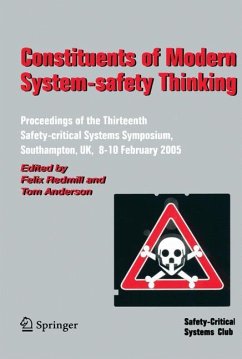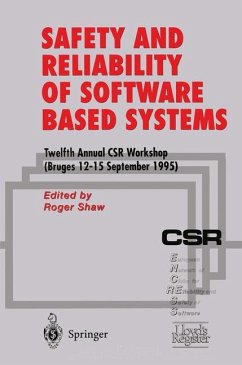
Guide to Applying Human Factors Methods
Human Error and Accident Management in Safety-Critical Systems

PAYBACK Punkte
19 °P sammeln!
Human error plays a significant role in many accidents involving safety-critical systems, and it is now a standard requirement in both the US and Europe for Human Factors (HF) to be taken into account in system design and safety assessment. This book will be an essential guide for anyone who uses HF in their everyday work, providing them with consistent and ready-to-use procedures and methods that can be applied to real-life problems. The first part of the book looks at the theoretical framework, methods and techniques that the engineer or safety analyst needs to use when working on a HF-relat...
Human error plays a significant role in many accidents involving safety-critical systems, and it is now a standard requirement in both the US and Europe for Human Factors (HF) to be taken into account in system design and safety assessment. This book will be an essential guide for anyone who uses HF in their everyday work, providing them with consistent and ready-to-use procedures and methods that can be applied to real-life problems. The first part of the book looks at the theoretical framework, methods and techniques that the engineer or safety analyst needs to use when working on a HF-related project. The second part presents four case studies that show the reader how the above framework and guidelines work in practice. The case studies are based on real-life projects carried out by the author for a major European railway system, and in collaboration with international companies such as the International Civil Aviation Organisation, Volvo, Daimler-Chrysler and FIAT.














